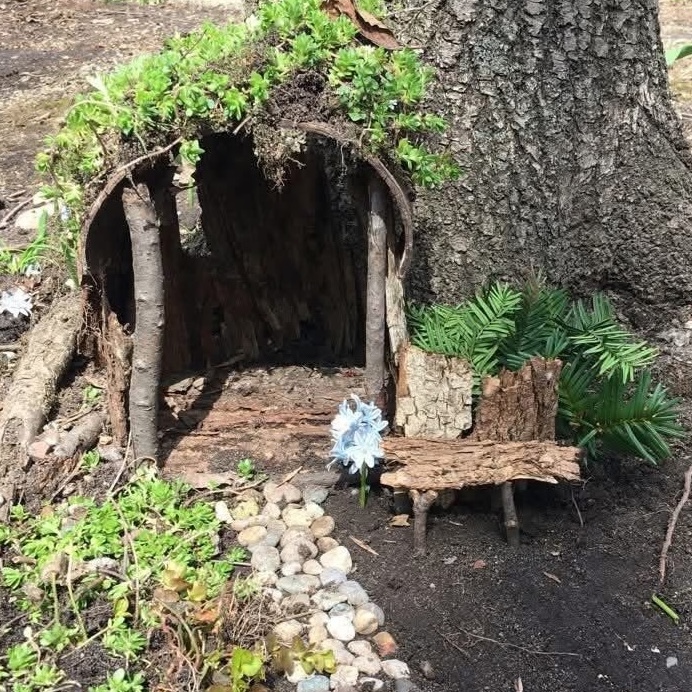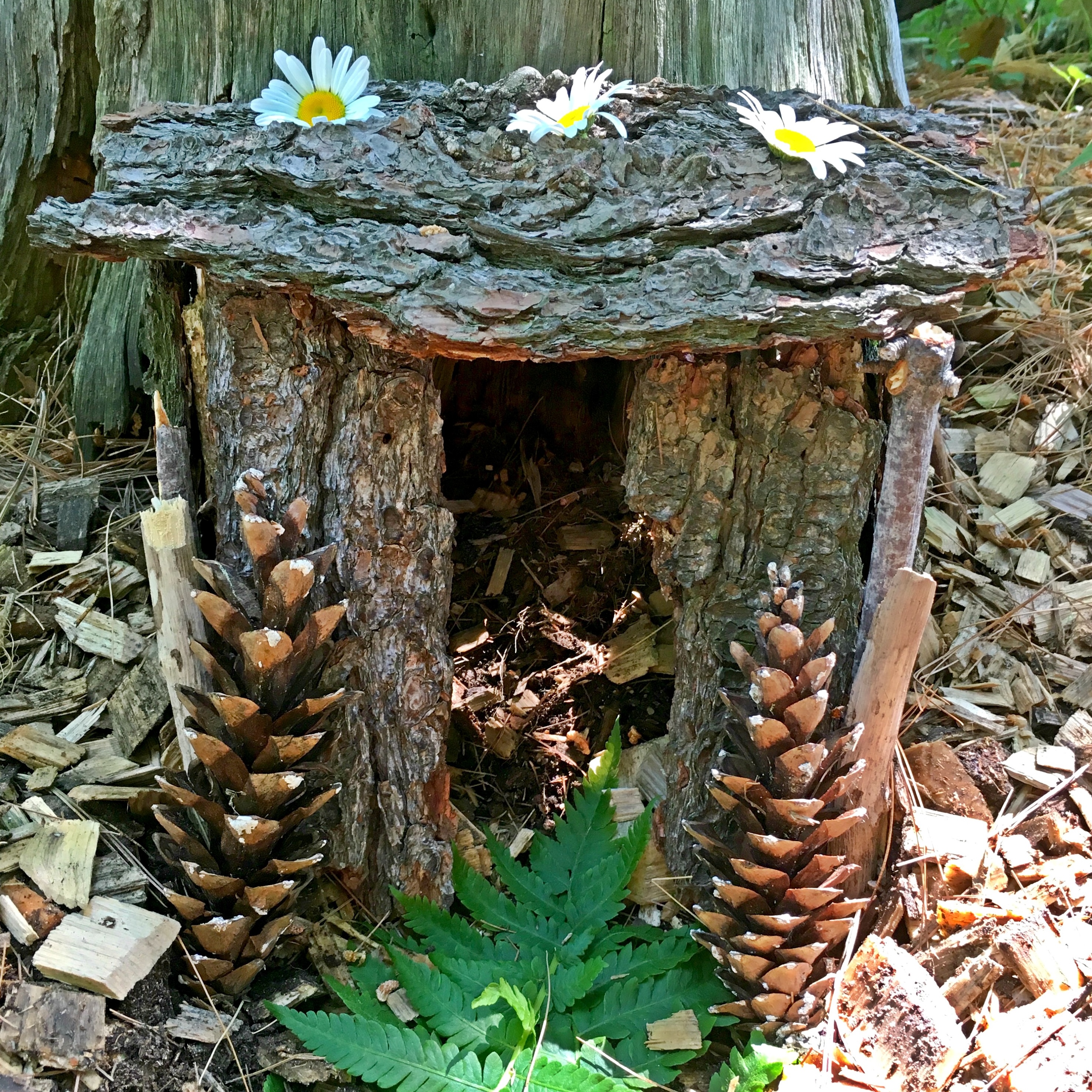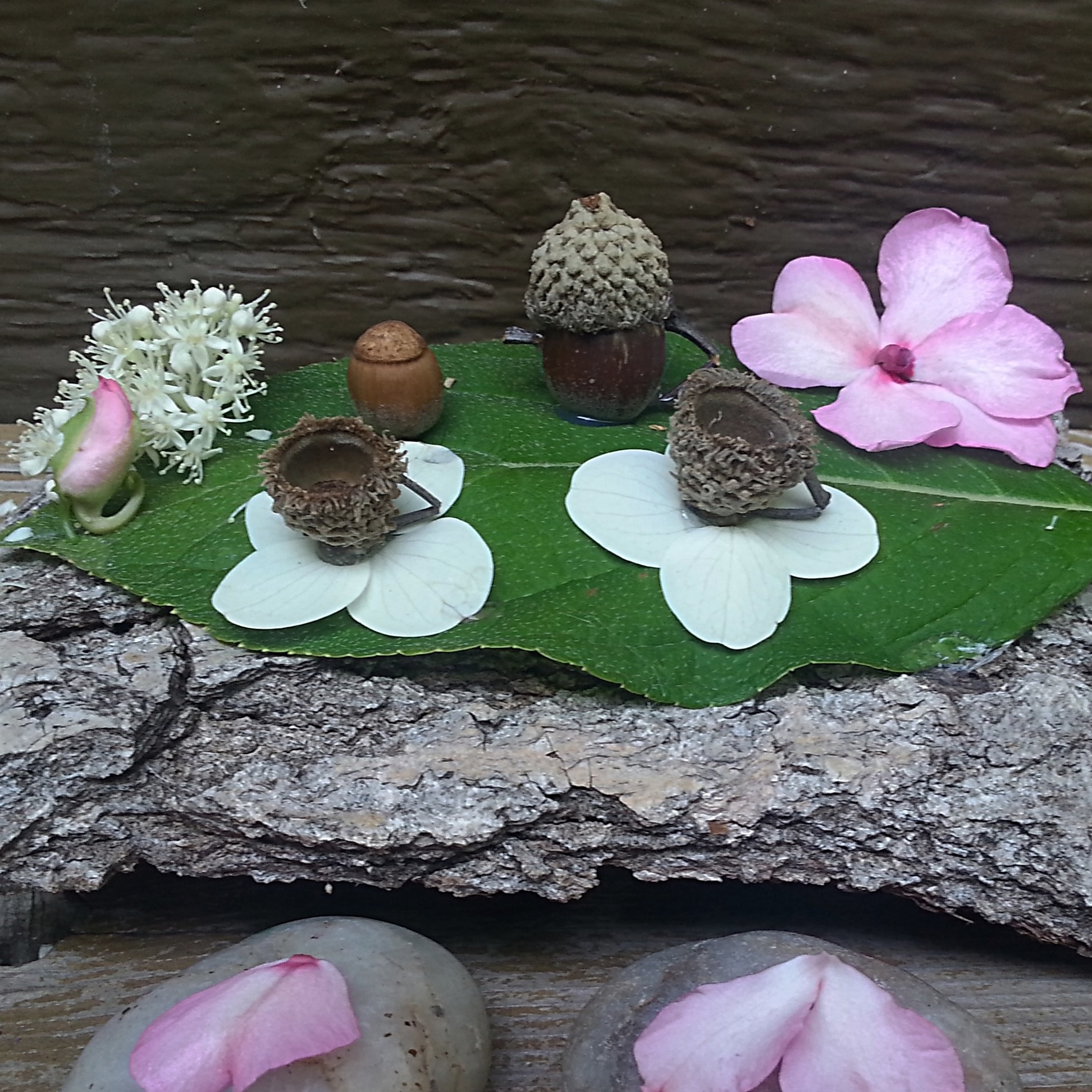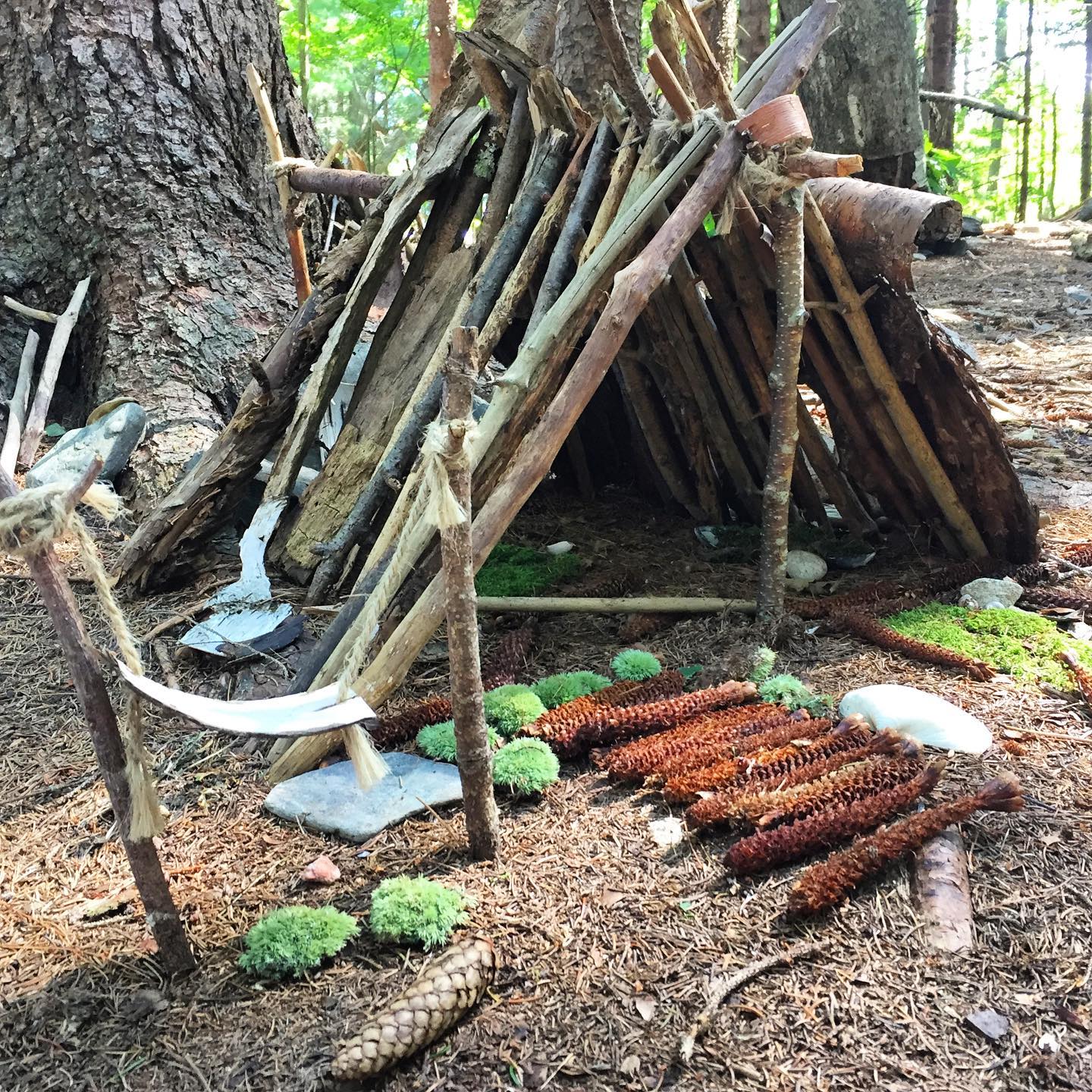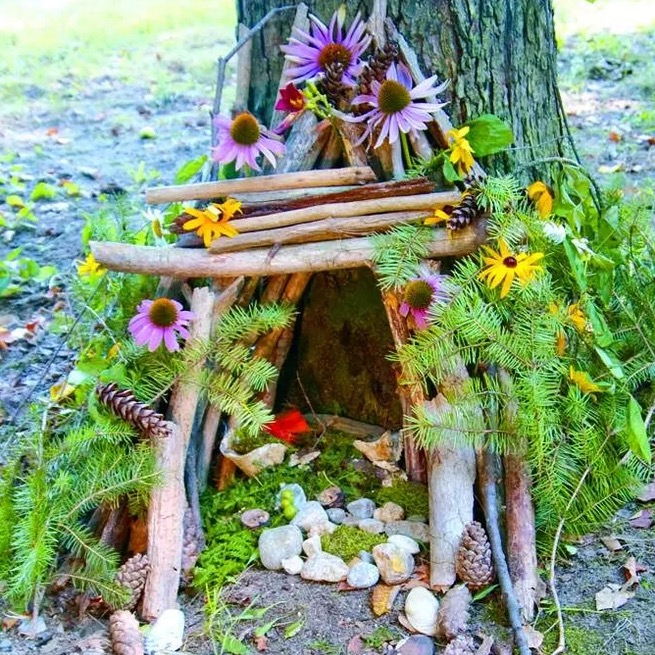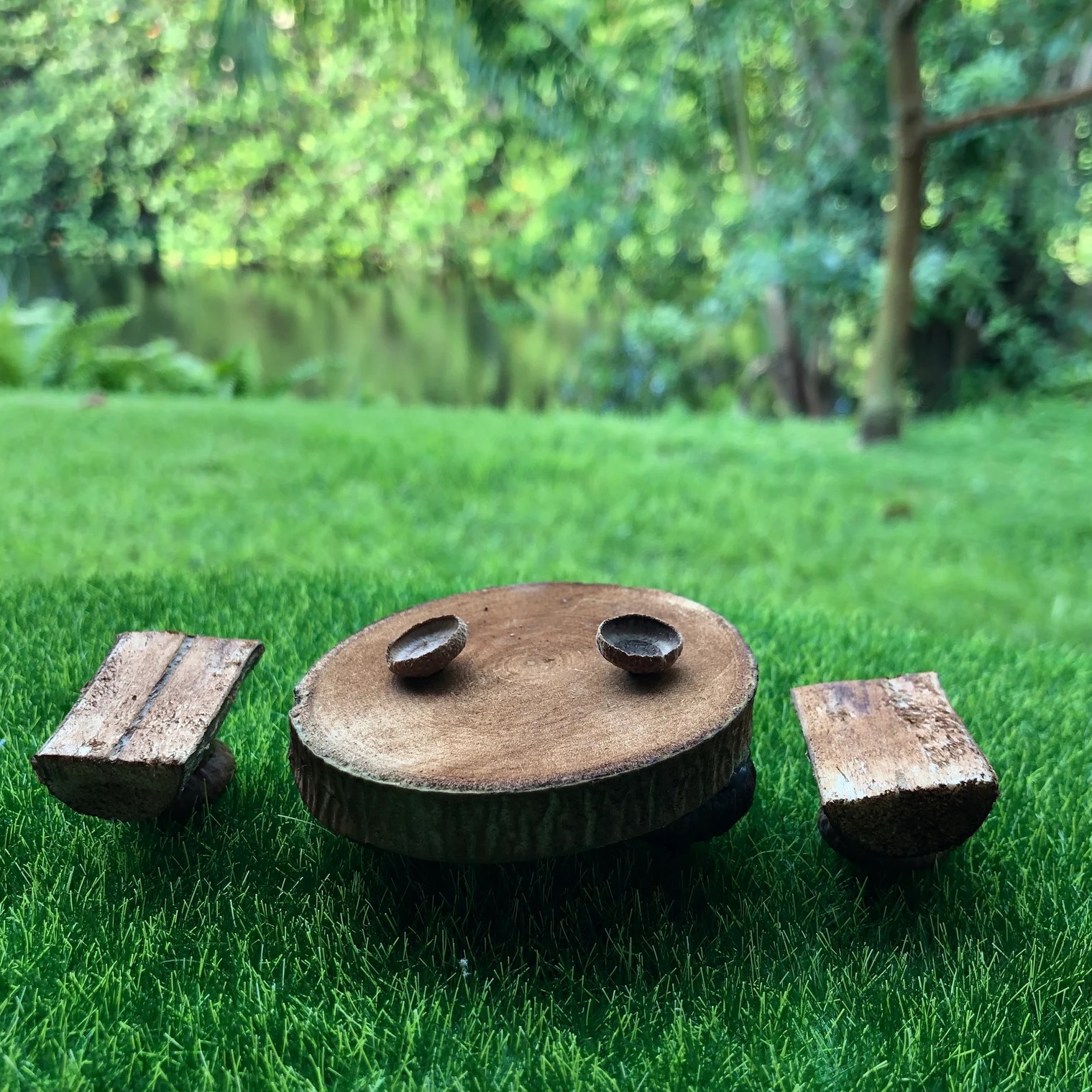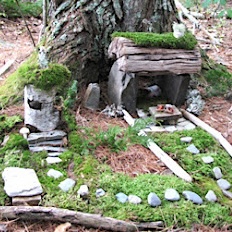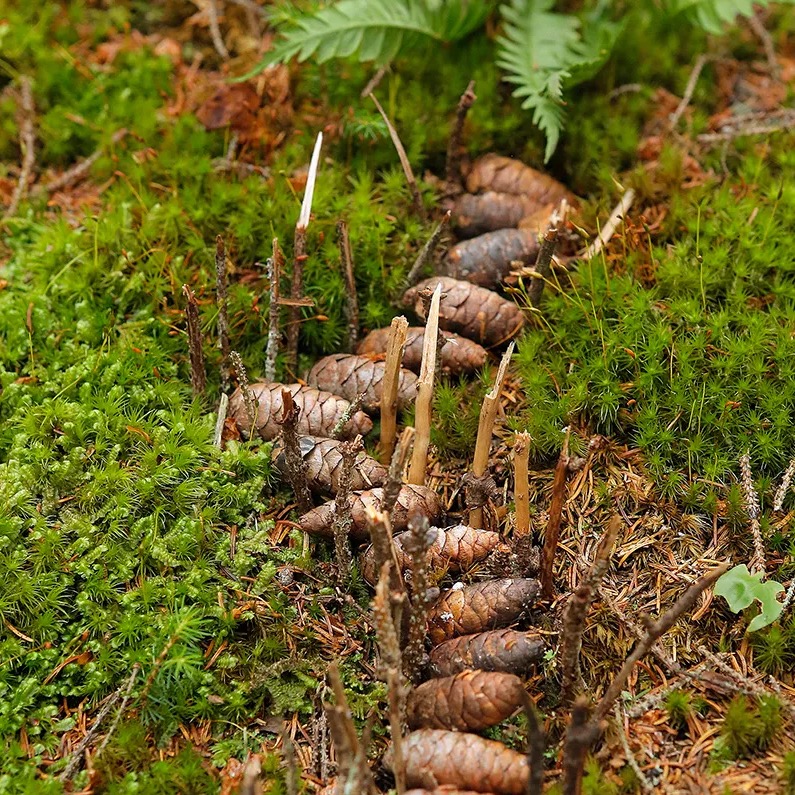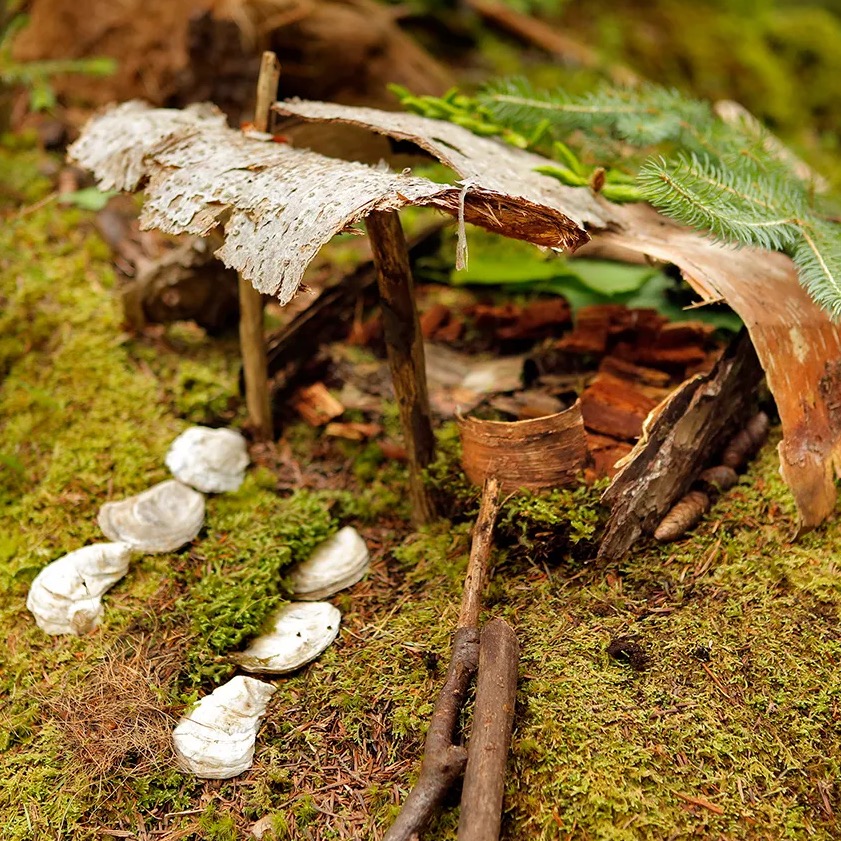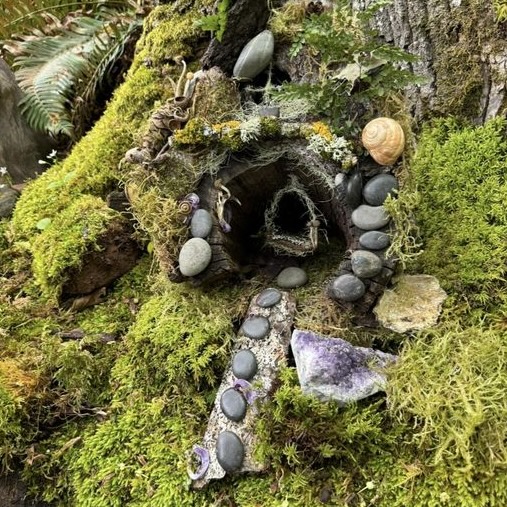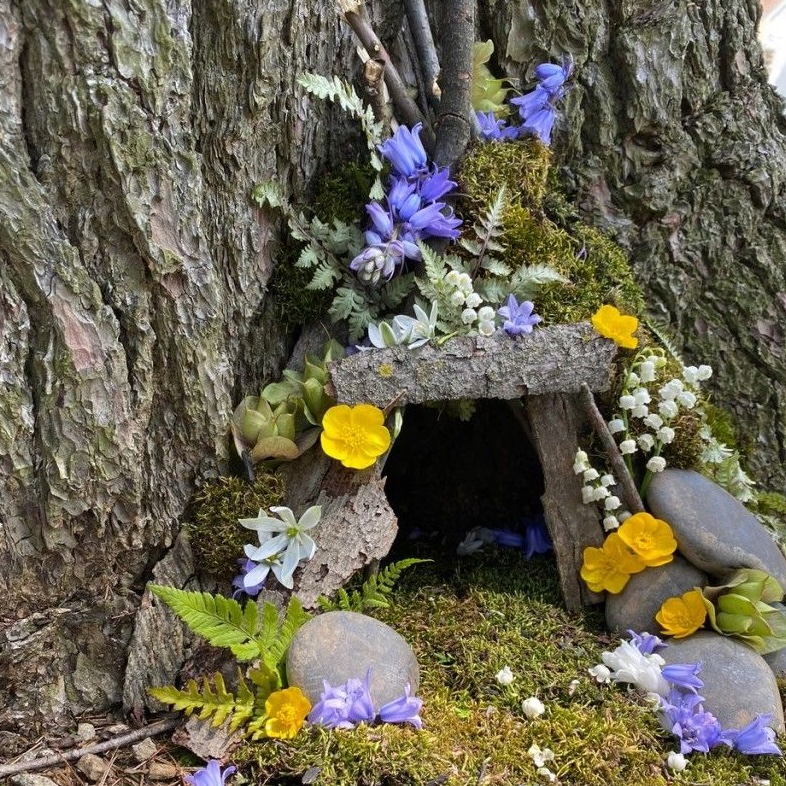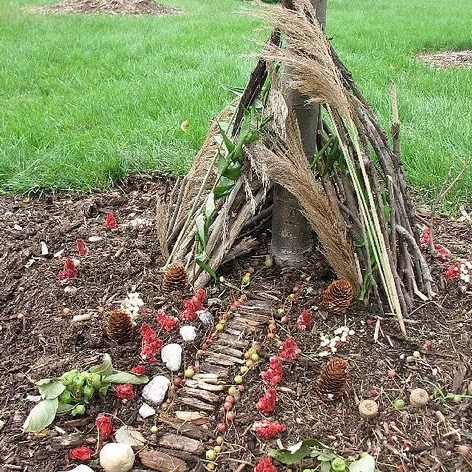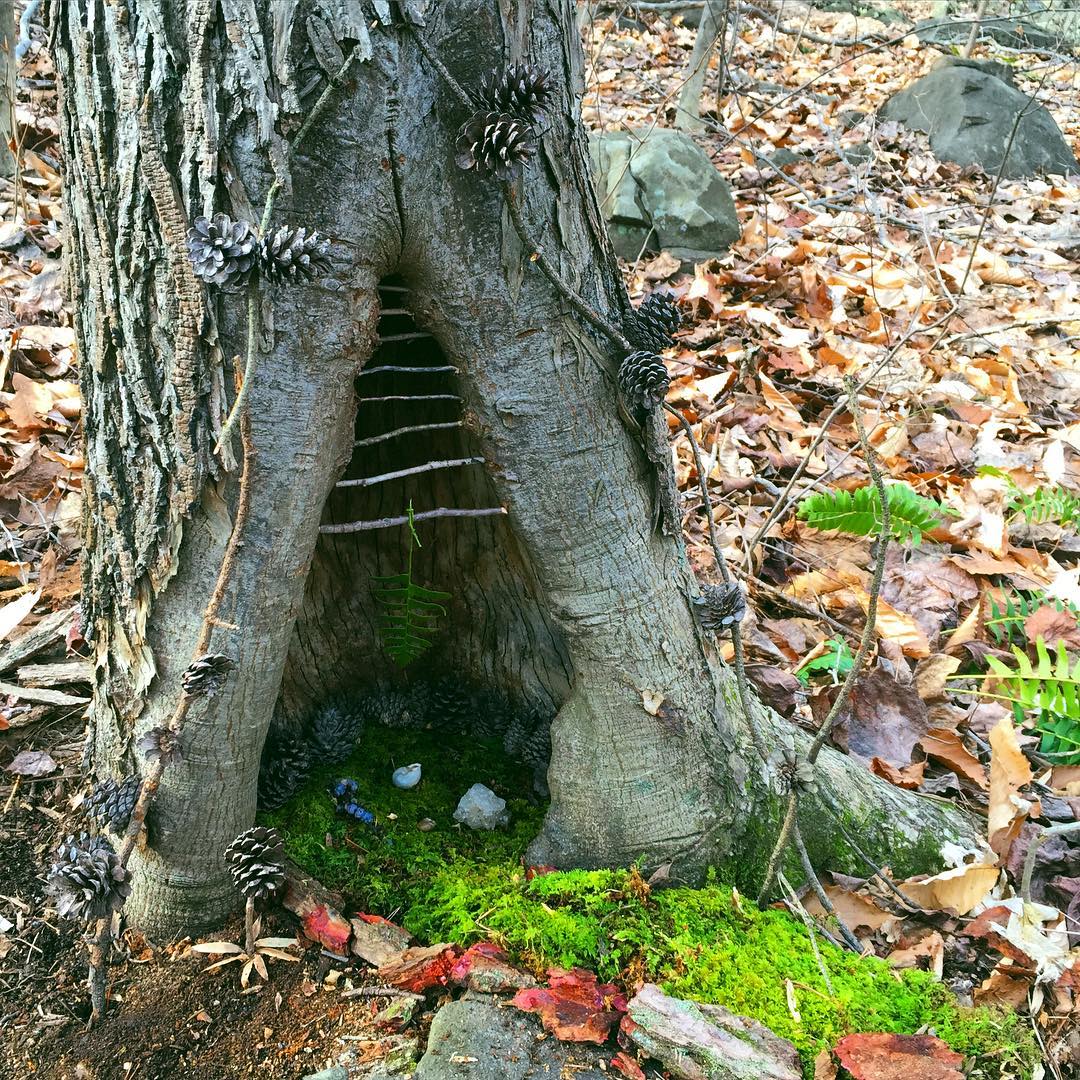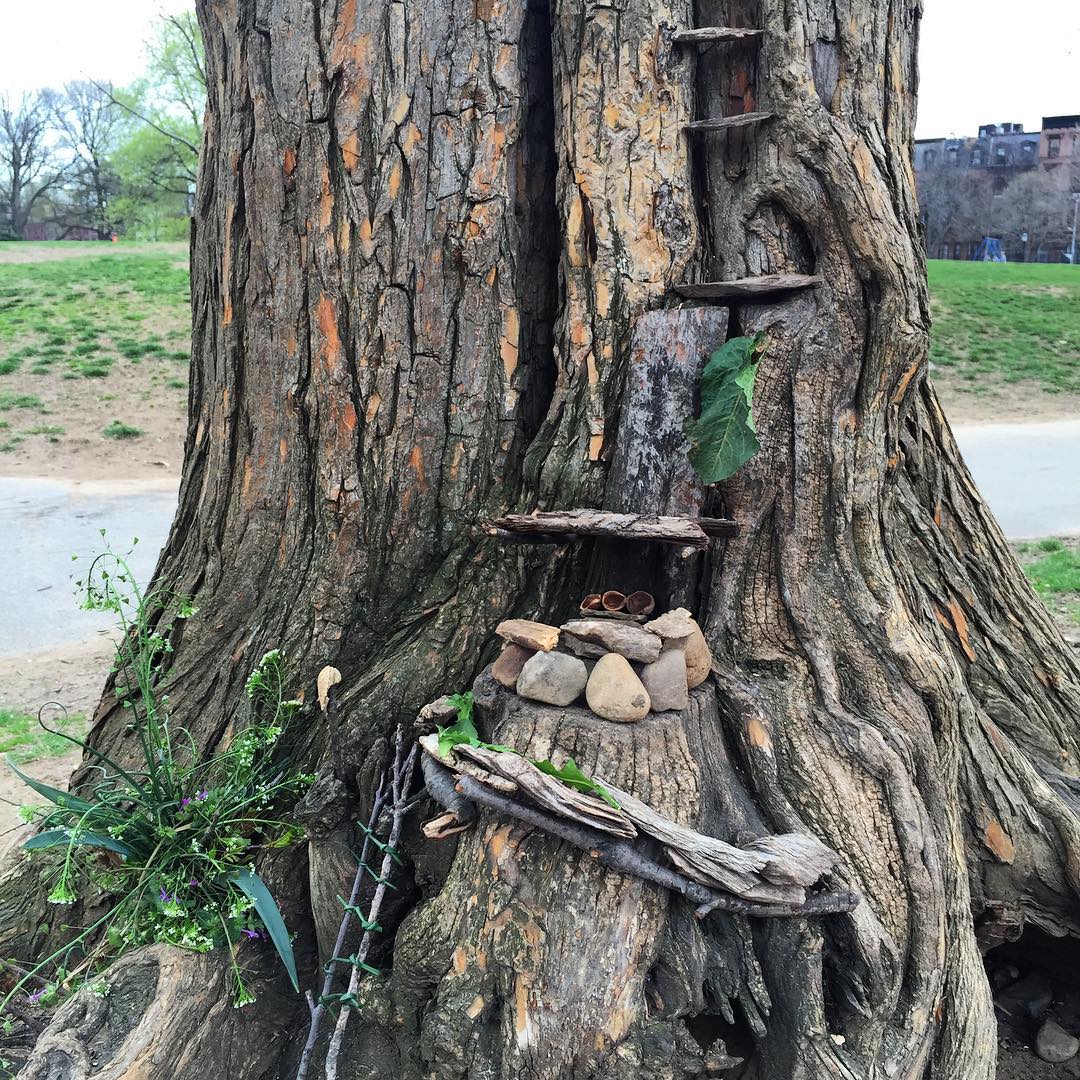Fairy Gardening
I recently picked up a free decommissioned SF Public Library book by Liza Gardner Walsh called Fairy Garden Handbook. This book reminded me of one of my favorite childhood hobbies: making fairy gardens in nature!
The book brought back a flood of memories from my time as a dedicated fairy gardener. I would scope out interesting spots and then collect natural materials like rocks, sticks, moss, acorns, and flowers to build houses for local or traveling fairies to enjoy.
I was introduced to fairy gardening while camping with the Girl Scouts, then brought the hobby to my own backyard in Charlotte, North Carolina. There, I set up a whole town for fairies in a raised garden bed at the back of our yard that bordered a small forest. Building fairy gardens tied together my love for all things whimsical and fantastical, fostered my passion for architecture, design, and decor, and got me out in nature for hours at a time. I spent countless afternoons examining and collecting natural materials while encountering animals and bugs along the way. A perfect hobby for little Sarah.
My Fairy Garden Philosophy
While Fairy Garden Handbook was a lovely book for me to find, as soon as I saw the cover I knew Liza and I had different fairy garden philosophies. On the cover there’s a girl with a fairy costume setting up a white dollhouse chair in front of a bright green table, with a tiny replica mailbox in front. No, no, no! While I don’t want to be too harsh, and won’t go so far as to say it’s wrong to build fairy gardens like this, I have to share my strongly-held fairy garden philosophy: fairy gardens should be built with natural materials.
For me, fairy gardening is about connecting with nature, to learn about flora and fauna, to spend time outside, and to observe the world around you. Using materials that aren’t biodegradable and could harm local plants and animals defeats the purpose. Plus, relying on store-bought figurines or plastic accessories robs you of the most magical part: the treasure hunt for perfect building materials and the creative challenge of transforming them into interesting designs that humans and fairies can enjoy.
It’s easy to fall into the commercialization trap. A quick Google search shows fairy-themed accessory sets from everywhere: Walmart, Etsy, Michaels, and even the dreaded Temu. Many of the sets are full DIY kits that include everything you’d need to set up your own fairy garden. Having a full kit turns the process from finding a cool location, collecting materials, and planning out how to build things, to just arranging.
Making do with natural materials promotes creativity, individuality, and creative storytelling. Constructing my own buildings and designs was also a perfect outlet for my interests in interior design, architecture, landscaping and tablescapes which I’ve carried into adulthood.
Yes, building with natural materials can be challenging. Things don’t stay in place and fall down, but for me, this became part of the fun. When an acorn cap bowl would fall off the stone table I made, I’d take it as a sign some fairies had eaten dinner there. When my bark roofs caved in, I worried if the fairies were under attack, or more hopefully, if they were trying to help me renovate. These little disruptions became the only proof I had of my invisible neighbors.
Admittedly, I only ever had confirmed sightings of birds, deer, squirrels, chipmunks, bunnies, snails, slugs, lots of bugs, and one time a creepy creature I now believe to be a mole. These encounters, in tandem with collecting my building materials and decor, taught me a lot about my backyard ecosystems.
My Own Fairy Garden Handbook
Inspired by Liza Gardner Walsh’s Fairy Garden Handbook, I thought I’d share a few ideas and bits of inspiration I’d include if I were to write one of my own.
Start by finding a magical spot
Look for a place to build your fairy garden that already feels a little magical. Nooks in tree roots, the base of a stone wall, or a corner tucked against a fence all make wonderful foundations that offer structure to build against and a sense of whimsy. A good fairy garden is often a little hidden, somewhere you might stumble upon rather than see right away. Trust your instincts, if a spot feels special to you, it’s probably perfect for the fairies too.
Gather your materials
Half the fun is in collecting materials. Look for interesting little bits of nature to work with:
- Rocks, pebbles, shells: perfect for pathways, walls, or tiny furniture
- Sticks and bark: rustic bridges, ladders, or fences
- Moss: the softest carpets and most convincing fairy lawns
- Leaves: shingles for fairy rooftops or colorful decorations
- Flowers: fresh blooms for immediate beauty and dried petals for lasting charm
- Mushrooms or berries: for fairy feasts only, of course
Remember to gather respectfully. Fallen, broken, or naturally shed materials are the ones fairies like best.
Begin building
Arrange your finds into little structures and see what you create. Sticks can become ladders, rocks turn into stairs, and a bit of bark can become a table. Don’t feel pressure to make anything perfect. Fairy gardens are living creations, always changing as you add new treasures, or as the fairies themselves decide to rearrange things.
Add tiny details
Fairy gardens come alive with the tiny details. The smallest touches make the biggest difference. Some top tier additions include acorn cap bowls, leaf roofs, and moss rugs. Don’t worry about replicating human accessories, enjoy the unique things you find and imagine what a fairy might be able to use them for.
Remember that fairies may make changes
Fairy gardens are meant to shift and evolve. It can be frustrating when a fairy garden structure collapses or your painstakingly placed decor falls out of place. But it’s important to remember that this is where the magic happens, and that changes are a sign that the fairies were there.
Inspiration Pictures
Time to get into one of the best parts, the pictures! Below I’ll share a bunch of fun photos I’ve found of fairy gardens and fairy garden accessories.
I’ll start with some pictures my mom took of my long-overgrown fairy garden in Charlotte, North Carolina. I haven’t tended to it for at least 15 years, but she still found and uncovered one of the fairy houses that was made out of a few large rocks! I’d like to think it’s been housing fairies for all these years.


Finally, I’ll end by sharing lovely nostalgic images of fairy gardens and accessories that I hope can be inspirational for anyone interested in making their own.

